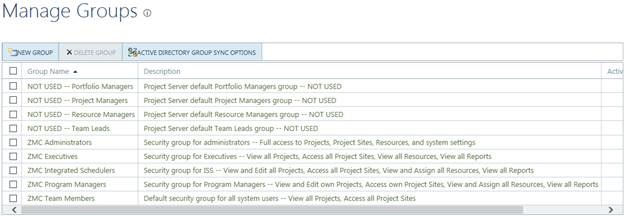If you are responsible for configuring the security model for your Project Server or Project Online implementation, following are some recommended naming and description conventions for security Groups and Categories.
This assumes that if you are running Project Server 2013 or Project Online, you are running the system in Project Server Security Mode — rather than SharePoint Security Mode — which I recommend for all production implementations. If you are running Project Server 2013 or Project Online for a quick proof of concept, then you may be able to get away with SharePoint Security Mode to generally evaluate system functionality, but I do not recommend it for production systems because of its limitations.
Security Group Naming and Description Conventions
- Name all active security groups with clear and recognizable role names.
- To easily distinguish active security groups from unused ones, add the company or group name to all active security group names, and add “NOT USED” to the beginning of all unused security group names.
- To easily distinguish active security groups from unused ones, add “NOT USED” to all unused security group descriptions.
- Create a description for each active security group that briefly states the role or level of access that is granted to the group.
Security Category Naming and Description Conventions
- Name all active security categories with clear and recognizable words describing the collection of data accessed through the category.
- To easily distinguish active security categories from unused ones, add “NOT USED” to the beginning of all unused security category names.
- To easily distinguish active security categories from unused ones, add “NOT USED” to all unused security category descriptions.
- Create a description for each active security category that briefly states the group associated with the category and level of access that is granted to the group.
Good luck!



